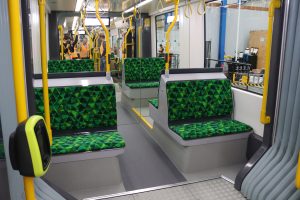Recently the idea of a “whole-of-nation” approach to Australia’s international engagement has taken root inside the federal government and the foreign policy community. This idea means that everything that occurs within the country is potentially impactful on Australia’s influence in the world. It is not only the prime minister’s office or the Department of Foreign Affairs and Trade that are international actors, but state governments, local councils, and a whole range of civil society actors, from cultural icons and media to sporting organizations and academia. In the context of a “whole-of-nation” approach, these are all essential ingredients in the complex stew of Australia’s capabilities.
The impact each of these components can have is accelerated by the ease and reach of modern technology. This is especially the case with good design. We live in an era where being “Instagrammable” is essential to how cities, regions, and countries are able to project themselves throughout the world. Much of this influence comes from natural beauty, but the way we design our cities also has a significant impact.
Of particular interest to me is public transport design. Transit routes are far more than just people-movers. They are the veins of cities; they generate life and culture in ways that cars simply do not. I maintain a firm belief that the only way to truly understand a city – anywhere in the world – is via its public transport system. Public transport carries a city’s soul, and with it a city’s international reputation.
Melbourne has the largest tram network in the world, with 24 routes and 250 kilometers (155 miles) of track. It is a major strategic asset of the city, not only in terms of getting people from point A to point B, but as an integral part of the city’s culture – and a tool it has to project itself internationally. The city’s image and its reputation are intimately tied to the look of its tram network. As Australia’s largest city, this is also a major national asset.
Yet the city’s tram network is not understood in this way by the Victorian state government. Instead it simply sees the network in functional terms – as transport and transport only. Due to this the actual designs of the trams themselves are not considered important. No efforts are made to produce compelling silhouettes, and their color schemes and seat covers are, frankly, dreadful.
While the Victorian state government may not take this seriously, other people do.
A 2019 article by Bloomberg titled “The Good, Bad, and Ugly Public Transit Seat Covers of the World” described Melbourne’s tram seat covers as “migraine-made-cloth” that “may be the worst out there.” While slight improvements have been made on a new fleet of trams set to roll out in 2025, these designs still aren’t great. There remains an obvious lack of consideration about what kind of image the city wishes to project to the world, and why this is important.
Unfortunately, there are structural reasons for this. Politicians and senior bureaucrats tend to not take public transport, and so don’t understand its significance in the way transit buffs do. They’re also not the coolest people in the country and so wouldn’t have a personal vision of how good design connects to their decisions.
Alongside this, Australia is by its nature a country that rests on its laurels. Australia sees itself – with some merit – as being a “lifestyle superpower.” The country is peaceful and wealthy; most things work very well, and the weather is generally excellent. Australian cities are always near the top of global livability indexes. Yet this breeds complacency about what improvements can actually be made.
Australia’s complacency also stems from a lackadaisical culture, especially when it comes to design. In general, Australians are an aesthetically disinterested people. At best, design is seen to be inessential to functionality, and at worst it is deemed pretentious – quite possibly the worst thing an Australian could be. To advocate for good design is to make oneself a target for some colorful – and unprintable – comments in Australian English.
Of course, this is not solely about seat covers on public transport and how they project influence. The issue is symbolic of how Australia thinks about the assets and resources it has and how to maximize their impact. The first step of a whole-of-nation approach to international engagement requires identifying the low-hanging fruit – the things that Australia could improve very easily to increase its global influence.
Good design is a decentralized mechanism for international engagement. It is a soft power tool that can produce expanding effects. Australia is not only trying to attract tourists or international admirers; it is also trying to attract skills. The skills that Australia needs to develop a more complex economy are attracted to good design. One only need to look at the world’s most complex economies – Japan, Switzerland, Taiwan, and South Korea – to see that good design and economic complexity coexist intimately.
To be dismissive of these details is to not take a whole-of-nation approach to international engagement seriously. It would be a failure to not understand how each component of public policy contributes to the country’s capabilities, and how each detail, no matter how insignificant it may seem, is connected to a broader issue. While government decisions are often driven by innate cultural attributes, with a bit of vision governments can also be influential in shifting this culture.

































